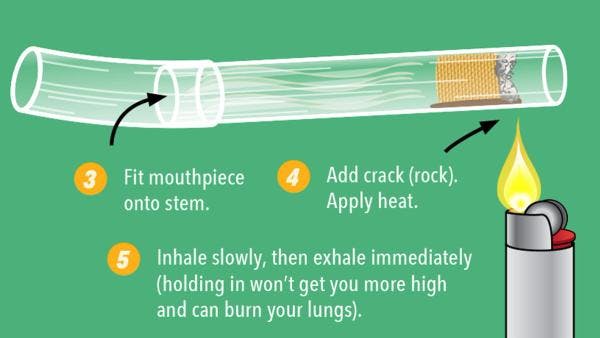Detail from Safer Crack Smoking brochure by CATIE - Available here https://www.catie.ca/client-publication/safer-crack-smoking
People are mad: New York City is giving out “crack pipes,” but should they be?
Ryan Marino, MD, is a triple-board-certified physician practicing emergency medicine, medical toxicology and addiction medicine. He is an Associate Professor at Case Western Reserve University School of Medicine in Cleveland, Ohio, and shares his opinion on whether giving out "crack pipes" is truly harmful.
In June, New York City debuted the first of multiple planned public health vending machines, stocked with a variety of health supplies including personal hygiene items, safer sex supplies, and Narcan (naloxone) and fentanyl test strips. The latter harm reduction items have received the most attention, particularly the safer smoking kits, which include lip balm, mouthpieces and clean stems (often referred to as “crack pipes”).
While the practice of harm reduction as public health is neither remotely new nor limited to drug topics, and has extensive scientific backing, this has sparked quite a bit of controversy.
"The idea of giving people supplies for drug use, often referred to as 'paraphernalia,' has received a significant amount of backlash since then in popular media, mainly focused on the smoking supplies — the 'crack pipes.'"
It is easy to make such a concept sound ridiculous to the general public by implying that government agencies are just passing out items that allow for drug use, even if that’s not really the truth.
Similar narratives have been presented before to oppose even things like naloxone, a literal lifesaving antidote for opioid overdose, by falsely implying that saving the life of someone experiencing is enabling use and even unsafe use, both of which are false. Because of our deep-rooted societal stigma towards certain drugs (and the people who use them) it is unsurprising that anything that can possibly be seen as enabling such drug use will draw outrage. And in today’s popular media cycle, outrage seems to get the most attention.
A useful counterpoint is alcohol. Alcohol is a drug; it causes significant health consequences and is actually a leading cause of death. But most people don’t think of alcohol as a drug (the U.S. Food and Drug Administration even classifies it as a food), and even if they do, they do not think of it as being bad or harmful like other drugs even though it objectively is. Cannabis, too, has benefited from similar double standards. Both alcohol and cannabis users benefit from significant harm reduction strategies from the government. But there is little attention paid to these drugs or the steps that have been taken to make it safer for the people who use them simply because they are more socially acceptable.
